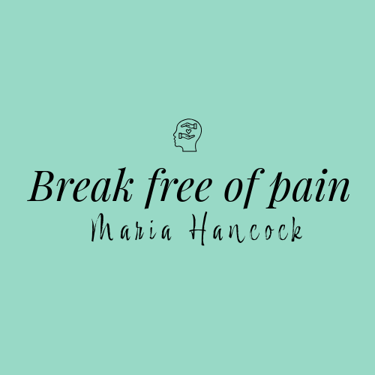What helped me overcome my chronic pain
A brief description of what helped me overcome chronic pain. This is how I overcame over 25 years of RSI and 13 years of knee pain using the mind-body approach to chronic pain,
CHRONIC FATIGUEPERSONALITY TRAITSPEOPLE PLEASINGNEUROPLASTICITY#CHRONIC PAINNERVOUS SYSTEM REGULATION
Maria Hancock
8/4/20256 min read
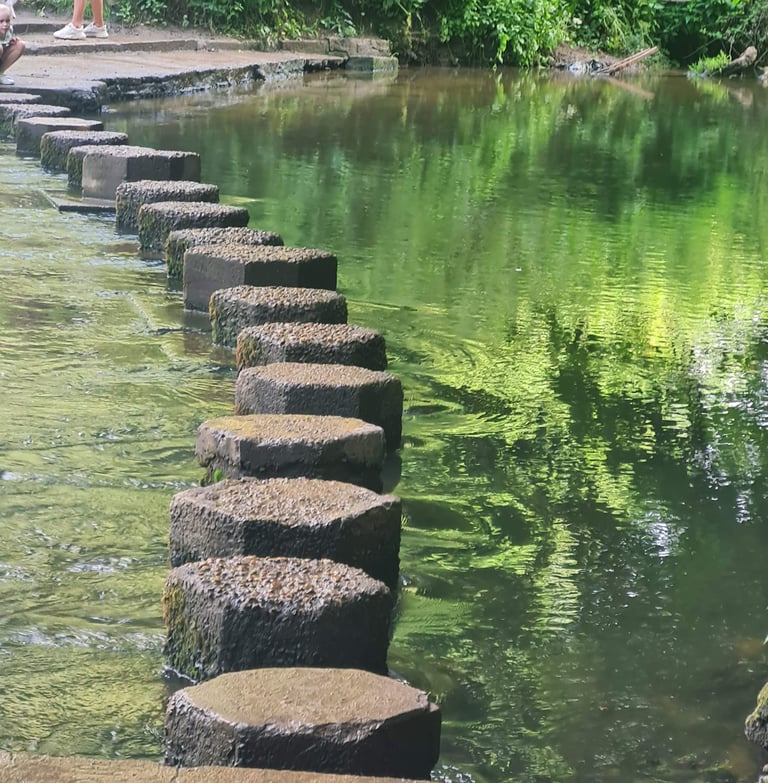

What steps helped me overcome my chronic pain?
The number one question I get asked is: “What did you do to get better?”
It’s a good question, and totally understandable! When you’re stuck in chronic pain or symptoms, it’s natural to want a step-by-step guide. But here’s the thing: while these are the steps I took to help my brain feel safe again, your path may look a bit different.
We all have different symptoms, stressors, histories, and brains. And while it’s tempting to seek out people who’ve recovered from your exact symptoms (I did it too—chronic knee pain and RSI, in my case), it turns out that’s not the most important part. The brain can produce all kinds of weird and wonderful symptoms, but the recovery process is often remarkably similar across the board. So, here’s what worked for me and remember that there’s more than one way to reach the same destination.
Education, Education, Education
Without a doubt, this was my most important first step. I discovered the mind-body connection through the Curable podcast, and from there I went down the rabbit hole—books, more podcasts, articles... I absorbed everything I could about the science behind chronic pain.
Understanding why my pain existed (and that it wasn’t due to physical damage) was crucial. You have to convince your brain you’re safe—and knowledge is power. Some people even experience what’s known as a “book cure,” where just learning this stuff helps the brain rewire and turn off symptoms. (Yes, really.)
Hearing other people’s recovery stories also gave me hope. It reminded me I wasn’t alone and that if they could do it, maybe I could too.
Gather support
Once I started diving into this work, I knew I needed support. I explained the approach to my husband—science and all—and after listening carefully, he said, “Of all the crazy things you’ve done, I think this one might actually work!” That was music to my ears.
I told my closest friends and family what I was doing and why. It helped them understand the changes I was making—and meant they could cheer me on too.
I also joined a couple of Facebook groups for mind-body healing. Connecting with others on a similar journey was so reassuring. I still pop in occasionally to offer support (and get a boost myself!).
Eventually, I realised I still had a lot of fear around my symptoms, so I reached out to work one-on-one with a trained practitioner. Hearing them confidently say, “Yes, this is Mind-Body Syndrome” helped me ditch any lingering doubt. I made a pact with myself to stop fearing damage—and start moving again.
Journaling
Confession: I resisted journaling for ages. I knew it was often recommended, but I didn’t want to sit with uncomfortable feelings.
That changed when I started working with a PRT coach. I began writing for 20 minutes a day about stressful events—past or present. Afterward, I’d follow it with a short loving-kindness meditation or another calming practice. It wasn’t easy at first, but it really helped.
Affirmations
I made myself a list of affirmations like:
“I am strong. I am healthy. My knees are healthy. I allow all of my emotions. Pain doesn’t scare me.”
Each morning, I’d head outside (luckily this was during spring and summer) and say them out loud while standing in a Wonder Woman-style power pose. Sounds a bit cheesy, but standing in the power pose increases your confidence hormone and decreases a stress hormone.
Changing Stress-Inducing Behaviours
I had to take a hard look at some of the behaviours I'd developed which created stress - people-pleasing, perfectionism, needing to be liked and so on.
I started noticing when those traits were getting triggered and practised setting boundaries—saying “no” when I really meant it, for example. It wasn’t always comfortable, but it was freeing.
It helped improve my relationships by encouraging more honest communication and reducing the resentment that built up when I agreed to things I didn't want to do. I realised I’d sometimes used pain as an excuse to avoid things. I stopped doing that too. Luckily, progress is most important and not perfection, as it can be hard to change long-term habits and behaviours overnight. (Yup - still working on my perfectionism!)
Emotional Awareness and Compassion
This one’s still a work in progress, but probably the most valuable thing I’ve learned.
Every day, I’d pause to check in with my body—what sensations I noticed, what emotions might be present. My mindfulness practice helped me observe everything with curiosity and compassion rather than fear.
As my pain faded, I noticed anxiety creeping in (which is common!). So I applied the same gentle awareness approach to that, too. Sometimes I’d journal through strong emotions, then challenge any distorted thinking patterns I noticed. It helped me see that a lot of emotional distress comes from thoughts, not events themselves.
Reducing Fear of Symptoms
Avoidance fuels fear—and fear fuels pain. So I made a list of things I was avoiding, and I started reintroducing them, one by one.
Before each activity, I’d visualise myself doing it pain-free. Then I’d do it for a short time, gradually increasing. For example, I used to dread stairs. So I’d imagine going up them with ease, then actually do it—smiling and saying, “This is good for me! I’m exercising and lubricating my joints.”
Eventually, the pain decreased. Then I moved on to the next challenge.
Somatic Tracking
When I felt symptoms, I practised somatic tracking. Somatic tracking is a practice whereby you notice your sensations with a sense of calm, curiosity. Watching your sensations in this way, as opposed to with fear, helps the brain to reappraise the sensations as safe.
With time, I could even do this while moving. And when I saw symptoms ease in response to my reduced fear, I gained confidence.
Attention and Intention
I got better at noticing when I was hyper-focused on my pain—and gently redirecting my attention. Like when walking, I’d focus on the sunshine, the breeze, the trees—not my knees.
I also checked in with why I was doing things. If I meditated with the goal of “getting rid of pain,” I’d end up hyperfocusing on my sensations. If I did it just to be kind to myself, the pressure lifted—and ironically, the pain eased.
Outcome Independence
This one was tough. Outcome independence means not being emotionally attached to results. If I went for a walk, the goal wasn’t “no pain”—it was “enjoy the walk and handle whatever comes.” It takes practice, but it’s powerful.
Healthy diet and good sleep
My diet was already decent, but I made more of an effort—whole foods, plenty of veggies, protein, water. I cut back on ultra-processed stuff (bread is sneakily one of them!) and tried to reduce sugar (chocolate is still my weakness!).
I also prioritised sleep. I stuck to a regular bedtime and aimed for 7.5–8 hours a night. Around this time, I discovered earthing and bought an earthing sheet, which seemed to help with sleep and recovery too.
Riding the Ups and Downs with Patience
Healing isn't usually linear. One day I’d feel amazing, the next I’d be back in pain wondering what I did “wrong.” I knew wanting to get better NOW would not help. I told myself that I had experienced chronic pain for over 25 years, so what would another year or two matter?
I also told myself that I would enjoy the journey, not just the destination. In fact, I can remember those months feeling quite magical in a way, as once I started to make progress, I felt such excitement at being able to do the activities I had dreamt of, which leads to my final piece of advice...
Dream Big and Focus on your Outcome
With my background in solution-focused hypnotherapy, I knew how important it was to visualise the life I wanted. So I did.
I began dreaming of places I wanted to go and activities I wanted to do: kayaking, cycling, weight training, rejoining my fitness class, visiting London, concerts, climbing down to the stepping stones at Box Hill (pictured above), hiking, travelling overseas and so on. I not only visualised doing these things, but would talk about them as well - as something I WAS going to do, rather than something I wanted to do.
Summary
Overcoming chronic pain took more than a single method - it was a mix of education, mindset shifts, emotional work, nervous system support, and self-compassion.
And if you’re on this journey too, just know: it is possible. You have more power than you think. Your brain and body want to heal—and with the right approach, they can.
My symptoms...
Some of my symptoms were chronic, and some came and went. I recognise now that they were all created by neural pathways, and all have either disappeared or (those in brackets) have reduced using the mind-body approach.
Chronic knee pain (chondromalacia Patella)
Repetitive Strain Injury
IBS and Chronic constipation
Neck ache
Low back and buttock pain
Shoulder pain
Migraine
Headaches
Fatigue
Anxiety
Nightmares and REM sleep behaviour disorder
Itchy skin
(Tinnitus)
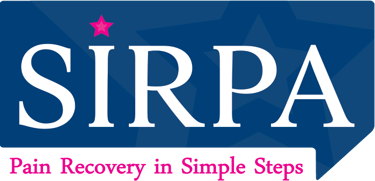

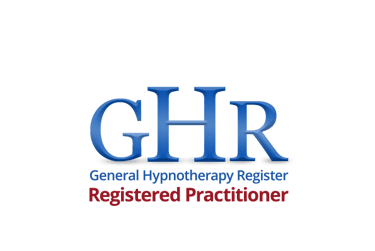

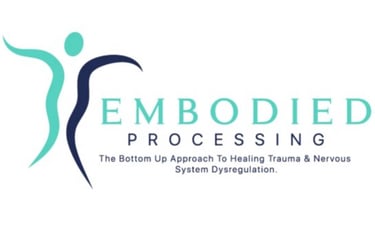

TMS, PPD, Mind-Body Syndrome, Perceived Danger Pain, Neuroplastic Pain Syndrome, Chronic Pain Recovery Practitioner in Horley, Surrey, UK and Online Internationally. (English speaking only).
